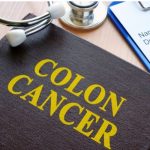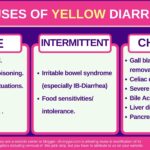Clear White Mucus In stool: 6 Causes explained.
Our content is not intended nor recommended as a substitute for medical advice by your doctor. Use for informational purposes only.
Mucus is usually shed in stool. However, some diseases increase the shedding clear white mucus in the stool, such as irritable bowel syndrome, dysentery, anorectal fissures, anorectal ulcers, etc.
This article will answer your most common questions about clear white mucus in stool, its causes, and when to worry about it.
Table of Contents
Can clear mucus in stool be a normal finding?
Understanding mucus:
Have you ever questioned why our unique gastrointestinal system can digest food but not itself?
Well, the answer is mucus.
The mucus is everywhere in your digestive system; It covers all the cells inside your digestive system, from the stomach to the rectum. The stomach and the colon are further covered by two mucus layers (reference).
The mucus in your digestive system is a white, clear, and viscid substance. It is found in the stool all the time but in unnoticeable amounts.
Mucus serves many important functions, such as:
- A barrier protects the lining of stomach cells from self-digestion.
- A trap for harmful bacteria, viruses, and other organisms.
- A lubricant helps the intestinal contents to pass smoothly through the digestive tract.
- A site at which commensal organisms live.
Does clear or white mucus in stool always mean something is wrong?
Mucus can appear in stool under normal conditions such as:
- Dehydration.
- Prolonged fasting.
- In the baby stool.
No need as long as there are no other symptoms and the mucus is clear. However, see a doctor if you constantly experience increased mucus in stool or have other symptoms such as:
- Diarrhea.
- Abdominal pain.
- Blood in stool.
- Constant bloating or distension.
- Severe constipation.
- Nausea or vomiting.
- Fever.
- Anorectal pain.
- Change the color of the mucus (greenish or reddish).
The most important and most common causes of clear or white mucus in the stool are discussed in detail below:
1 . Food intolerance (or allergy).
Food intolerance is a widespread condition. For example, Lactose intolerance (the commonest type of food intolerance) can affect up to 100% of people (reference).
Intolerance is difficulty digesting or absorbing certain types of foods or food constituents. When you eat the offending food, you will experience symptoms such as:
- Abdominal pain.
- Diarrhea.
- Mucus in the stool (often white and clear).
- Bloating and distension.
- Nausea (and sometimes vomiting).
Food allergy is another form of food reaction that is immune-mediated. The differences, features, and examples of food intolerances and food allergies are in the table below:
Food allergy and food intolerance are very common conditions and are overlooked by many doctors and patients. However, many people diagnosed with IBS may have an underlying food intolerance, causing their IBS-like symptoms.
The most common symptoms of food intolerance are diarrhea, with can be yellow diarrhea. In the table below, you can learn the difference between food intolerance and food allergy.
| Food intolerance | Food allergy |
| Affects 15-20% of the population | Affects nearly 2-5% of adults |
| Difficulty digesting certain types of food (not immune-mediated allergy). | An immune-mediated reaction to certain foods or food components. |
| Causes “recurrent acute” or “chronic” attacks of diarrhea. | Usually causes acute attacks related to the ingestion of offending food. It also can cause yellow diarrhea. |
| Intestinal symptoms: diarrhea, extensive gas, bloating, abdominal pain, mucus in stool. | Intestinal symptoms are the same |
| No extra-intestinal symptoms | Extra-intestinal symptoms like rashes, urticaria, swollen lips or face, or severe life-threatening allergic reactions. |
| The severity of your symptoms is proportional to the amount you eat from the offending food. | Even trace amounts of the offending food can produce severe symptoms. |
Common offending foods:
| Common offending foods: (examples)
|
2. Irritable bowel syndrome.
Another common cause of abdominal pain and loose yellow stool is Irritable bowel syndrome.
IBS affects around 11 to 15% of the population (ref). There are no specific tests to diagnose IBS. However, it is diagnosed according to some clinical criteria.
The fundamental symptom of IBS is abdominal pain that occurs at least once per week. The onset of abdominal pain is associated with at least 2 of the following:
- Defecation: abdominal pain is relieved (or worsened) during or after defecation.
- Change in stool form: stool becomes harder or more loose stool.
- Change in stool frequency: more frequent or less frequent bowel movements (constipation or diarrhea)
Only 30% of people matching the IBS criteria will consult their doctors about IBS symptoms (ref).
This leaves 70% of people matching the diagnostic criteria of IBS without knowing they’ve IBS!
If you have recurrent abdominal pain and yellow stool, Read this in-depth guide to determine if you have IBS.
Mucus In Stool With IBS: Causes, Different Colors, & Treatment.
3. Infections.
A- Dysentry (especially Bacillary dysentery):
Dysentery is the passage of blood, mucus, or both blood and mucus with stool. In severe cases of dysentery, mucus or blood comes out without stool. The condition is usually accompanied by severe urgency to poop and frequency.
Dysentery (especially bacillary dysentery) is the most common cause of acute onset proctitis. In addition, having a recent onset urgency to poop with only mucus coming out is commonly due to dysentery.
Symptoms (How to suspect):
- The onset is acute: if you have a recurrent or chronic mucus-only stool, then dysentery is unlikely.
- Diarrhea may present at first, then only mucus or blood comes out.
- Tenesmus: intense urgency to poop, only a small amount of mucus comes out. A sense of incomplete evacuation follows this.
- Intense abdominal pain (usually localized in the lower abdomen).
- Fever: usually acute onset and high grade.
- Nausea, vomiting, or both. (rarely present with bacillary dysentery).
Another common cause of dysentery is amoebic dysentery. Amoebic dysentery is caused by a protozoan called “Entamoeba Histolytica.”
B- Other types of foodborne illnesses that can cause proctitis.
Some foodborne illnesses can cause dysentery and proctitis other than bacillary dysentery.
Foodborne illnesses (AKA food poisoning) occur due to various organisms. Some are known to cause proctitis, manifested by an intense urge to poop, with only mucus or blood coming out.
Common causes: (ref)
- Salmonella (Typhoid Fever).
- E-coli (Shiga toxin-producing strains and entero-invasive strains).
- Clostroides difficile colitis and proctitis.
- Cytomegalovirus colitis and proctitis.
The symptoms are usually milder than bacillary dysentery but may become severe, especially if you are immunocompromised.
3- sexually transmitted diseases (STDs) causing proctitis.
Recent sexual practice involving the anal area followed by anal discharge (mucus only coming out with urgency) may indicate a sexually transmitted disease.
Unfortunately, Your partner doesn’t have to be symptomatic to transmit the infection to you.
Common causes of STD-causing proctitis:
- Anorectal gonorrhea.
- Chlamydia infection: chlamydia infection of the anorectal commonly causes a severe urge to poop, and only mucus comes out.
- Syphilis: causes painful ulcers in the rectum and anal canal with the discharge of pus and mucus.
- Sexually transmitted campylobacter Jejuni: causes rectal ulcers, mucus-only diarrhea, intense urgency, and abdominal cramps.
Symptoms of STDs as a cause of proctitis:
- Anal pain.
- Tenesmus: a sense of complete evacuation of the rectum after defecation.
- Recent history of anal sexual activities (even with a partner without symptoms).
- Urgency: a sudden and intense urge to poop.
- Frequency: frequent attacks of stool urgency with nothing coming out or only mucus or pus.
- Rectal discharge: pus, mucus, blood, or mixed discharge.
- Fever may occur.
- Other genital symptoms, such as ulcers or abnormal discharge, may also be present.
Consult your doctor or an STD specialist immediately if you suspect you have an STD.
4. Inflammed fissures or hemorrhoids.
A. Anal fissures.
Fissures commonly occur due to the following:
- Chronic constipation.
- Normal delivery in females.
- Local trauma of the rectum or anal canal
- Chronic inflammatory diseases of the rectum, such as Crohn’s disease or rectal cancer.
Symptoms of anal fissures:
- Severe anal and rectal pain increases while poop is the main symptom. Almost there is no fissure without sharp pain.
- History of the causes, such as severe constipation or local trauma to the anal canal or rectum.
- With chronic fissures, you may feel a skin tag at the opening of your anal canal.
Inflamed Hemorrhoids (piles):
Hemorrhoids are dilated inflamed veins in the wall of the anal canal. Inflamed hemorrhoids can irritate the canal and secrete mucus.
Mucus from the inflamed hemorrhoids can come out without stool. It is associated with the urge to poop even after having a bowel movement (ref).
A bulge or a skin tag may be felt at the anal opening. Whether you are diagnosed with hemorrhoids before or not, you have to see your doctor if you’re pooping only mucus with the hemorrhoids.
5. Inflammatory bowel disease.
Inflammatory bowel disease refers to 2 major conditions:
- Crohn’s disease: Unexplained inflammation and ulceration at any part of your gut (from the mouth to the anal canal).
- Ulcerative colitis: Unexplained inflammation and ulceration affecting the large intestine only (the colon and the rectum).
According to the CDC, about 1.8 million U.S. adults (0.9%) had inflammatory bowel disease.
Symptoms of IBD:
- Persistent or recurrent diarrhea.
- Abdominal pain.
- Blood or blood and mucus coming out with or without a stool.
- Weight loss.
- Generalized fatigue.
- Fever may occur.
- Loss of appetite.
Suspect IBD if you have a prolonged history of abdominal pain, mucus, constant diarrhea, and blood in stool without obvious cause.
The main differences between Crohn’s and ulcerative colitis are summarized in the below table.
| Type | Crohn’s Disease | Ulcerative Colitis |
| 1- Site | Any part of the GI tract (from the mouth to the anal canal) | The colon and rectum. |
| 2- Lesions | Deeper, it can involve all the layers of the GI wall. | Usually superficial (only in the innermost layer) |
| 3-Predominant symptom | Crampy abdominal pain | Bloody diarrhea. (can be constant) |
| 4- Complications | Fistulas, abscess, intestinal obstruction | hemorrhagic toxic megacolon. |
| 5- Risk of colon cancer | Slight increase | Marked increase |
Ulcerative colitis and Crohn’s disease are major diseases that require medical care and follow-up.
Consult your doctor if you have a long history of recurrent abdominal pain and constant diarrhea with blood and mucus in stool.
6. Other causes of clear white mucus in stool.
- Anorectal and colorectal cancers.
- Rectal ulcer.
- Constipation.
- Diversion colitis.
- Antibiotic-associated colitis.
- Intestinal obstruction.
- Radiation therapy.
- Eosinophilic proctitis.
- Severe forms of food intolerance and food allergy.
- Anorectal fistulas or sinus.
- Cystic fibrosis.
- Evidence-based
- Written by a doctor.

Related Posts:
- Clear Urine with Bubbles: 6 Main Causes & When to Worry
- Can Vomiting Blood Cause Death? Doctor Explains.
- 6 Colon Cancer Symptoms in Women: Doctor Explains.
- 6 Causes of Bigger Stomach after Gallbladder Surgery…
- 7 Foods to Avoid With High Cholesterol (Doctor Explains)
- Can You Develop Lactose Intolerance Later In Life?…





